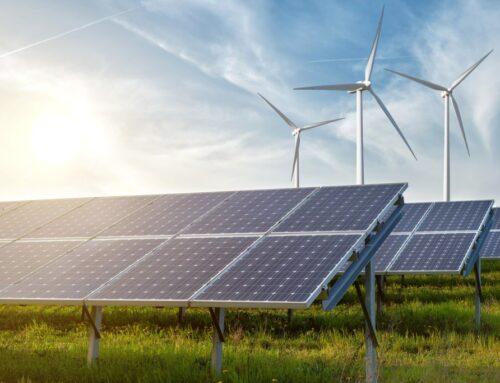UW researchers evaluate renewable energy pathways through a climate justice lens
October 2, 2024

Nonrenewable energy sources and fossil fuels are being replaced globally because of their long-term detriments to our planet. Scientists believe that this plan of action is the most direct way to fight the climate crisis.
To understand exactly how much can be achieved through energy transitions, scientists and policymakers map out scenarios that predict how much of a change certain preventative actions would make to reduce the impact of the climate crisis. These scenarios detail what the theoretical implementation of such energy solutions would look like.
While these scenarios are often accurate and well researched, they usually fail to include one crucial factor: climate justice.
“The climate modeling community has this way of developing scenarios, and it’s not necessarily consistent with what people actually want,” department of atmospheric and climate science associate professor Dargan Frierson said.
Frierson and undergraduate research assistant Ladanijirah Lightner spent their summer attempting to reconcile this issue.
Using data from the Shared Socioeconomic Pathways (SSP) database, Frierson and Lightner studied certain scenarios from a justice perspective. Their research consisted of reassessing the SSP scenarios and factoring in regional context.
SSP is a common reference for scientists that maps out five different climate scenarios (SSP1-SSP5) that range in severity. In the first scenario, the Earth reaches a peak temperature of 3.1 degrees Celsius above pre-industrial levels by 2100; in the last scenario, it reaches 5.1 degrees Celsius. The SSPs are very general and therefore lack a focus on climate justice.
The research team assessed many potential energy sources, namely wind, solar, hydroelectric, and nuclear, but the team did not identify a sole solution to the fossil fuel crisis. Instead, the solution to nonrenewable energy is contingent upon the region where new energy is being implemented.
Locally made energy sources are great options, according to Lightner and Frierson. Wind energy, for instance, is inherently a local option.
“One of the benefits of [wind power] is that the turbines are so huge, they actually have to be made locally,” Frierson said. “They can’t be transported.”
But every energy solution has its drawbacks. The controversy of nuclear energy is not something new, but according to Frierson, nuclear has historically been given a lot of government funding. However, in addition to creating nondisposable radioactive waste and multiple health concerns, nuclear power is proving to be inefficient. As a result, the focus on nuclear energy is dissipating.
“It’s actually decreasing worldwide,” Frierson said. “We’re retiring plants faster than we’re putting in new ones.”
Lightner explained that solar and wind are usually the best aligned with climate justice ideals. They are generally favored because of their low cost and lack of greenhouse emissions during construction, but it’s important to remember that these solutions are context dependent.
The most important component of climate justice, according to Frierson, is that the communities involved are informed and consent to the implications of energy transition in their area.
Reach reporter Abigail Meyers at science@dailyuw.com. X: @abby_meyers05
Like what you’re reading? Support high-quality student journalism by donating here.
Search
RECENT PRESS RELEASES
Related Post



